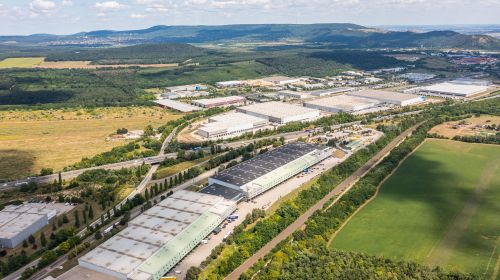Construction sector turns the corner
Construction
According to the ‘Polish Construction Industry 2015: Key Players, Key Growth Factors and Prospects for Development’ report, prepared by consulting company Deloitte, their sales margins also improved, rising to 8.3 pct, compared to the figure of 7.2 pct in the first six months of 2014. Deloitte claims that the further development of construction companies in Poland depends on the efficiency of the public sector in organising tenders for the development of major infrastructure projects. The construction industry in Poland is slowly recovering after the decline of 2012 and 2013, which followed the completion of large-scale investment projects financed by EU and the preparations for Euro 2012. Even last year it was becoming clear that construction companies were slowly turning the corner and this trend has only been confirmed in 2015. According to the analysis prepared by Deloitte, the incomes of construction companies listed on the Warsaw Stock Exchange amounted to PLN 10 bln in the first six months of 2015, whereas during the same period of 2014 the figure came to PLN 9.2 bln – an increase of 9.2 pct. “In 2014 the incomes of the 15 biggest construction companies in Poland amounted to PLN 28.5 bln, up by PLN 2.5 bln on 2013 and a 9.4 pct increase. This year the first company in the ranking prepared by Deloitte is Skanska Group, with an income of PLN 5.1 bln and an increase of 16.5 pct. In second place is last year’s leader, Budimex Group, with an income amounting to PLN 4.9 bln, up by 4.2 pct on 2013,” explains Maciej Krasoń, a partner in the audit department at Deloitte and real estate and construction industry team leader. According to Deloitte’s experts, the growth prospects for the Polish construction industry are promising, given that after two years of declines 2014 saw a slight increase in the value of the market of 0.4 pct. In Q1 of that year the number of bankruptcies in the construction sector decreased by one-third compared to the same period of the previous year. Earlier this year the trend for reduced employment by the construction industry also came to an end. “In Q1 of this year, employment rose by 1.5 pct compared to the same period of the previous year. In the long run, due to the inflow of new EU funds, we are expecting further growth in employment in infrastructure construction. The demand for specialised employees in heavy construction and the power industry will also grow,” says Patryk Darowski, the deputy director of the financial consultancy department at Deloitte.
UE funds power the market
The macro-economic factors are also favourable as far as further growth in the sector is concerned. “The strongest incentive to improve the standing of infrastructure construction in the foreseeable future will be the influx of new EU funds. In its new financial perspective and as part the cohesion policy, for 2014–2020 Poland will receive a record-breaking EUR 82.5 bln of funds, out of which EUR 25.8 bln will be allocated for developing infrastructure,” emphasises Patryk Darowski. Initial estimates of selected infrastructural requirements by 2020 calculated by Deloitte come to PLN 310 bln. This amount mainly includes investment in roads, railways, energy and environmental protection infrastructure.
Strong competition
Hosting the Euro 2012 football championships had a significant impact on the acceleration of the Polish infrastructure market. This, however, negatively impacted the results of many construction enterprises that took part in the projects associated with the tournament, as the market competition intensified, leading to price wars. As a result, bid prices for the services provided by general contractors slipped. And this still remains one of the greatest challenges for the construction industry in Poland. Even the amendments to the legal acts on public procurement made later on did little to change the market situation, because price continues to be the main incentive in bidding. According to some representatives of the construction industry, the price pressure could even grow bigger once new international players enter Polish market. “In order to avoid the sort of project backlog seen before the Euro 2012 tournament, the General Directorate of National Roads and Motorways [GDDKiA] has already assigned PLN 30 bln of the PLN 107 bln contracted in its 2014–2025 budgeting plans,” says Maciej Krasoń.“At the same time, PKP PLK has not selected a single winner of a tender financed within EU’s new multi-annual financial framework. And you have to bear in mind that the selection procedure takes time and it could even take two years from the time a tender is called to the start of the construction work. Therefore I would not expect a surge on the market by 2017,” he adds.





















































